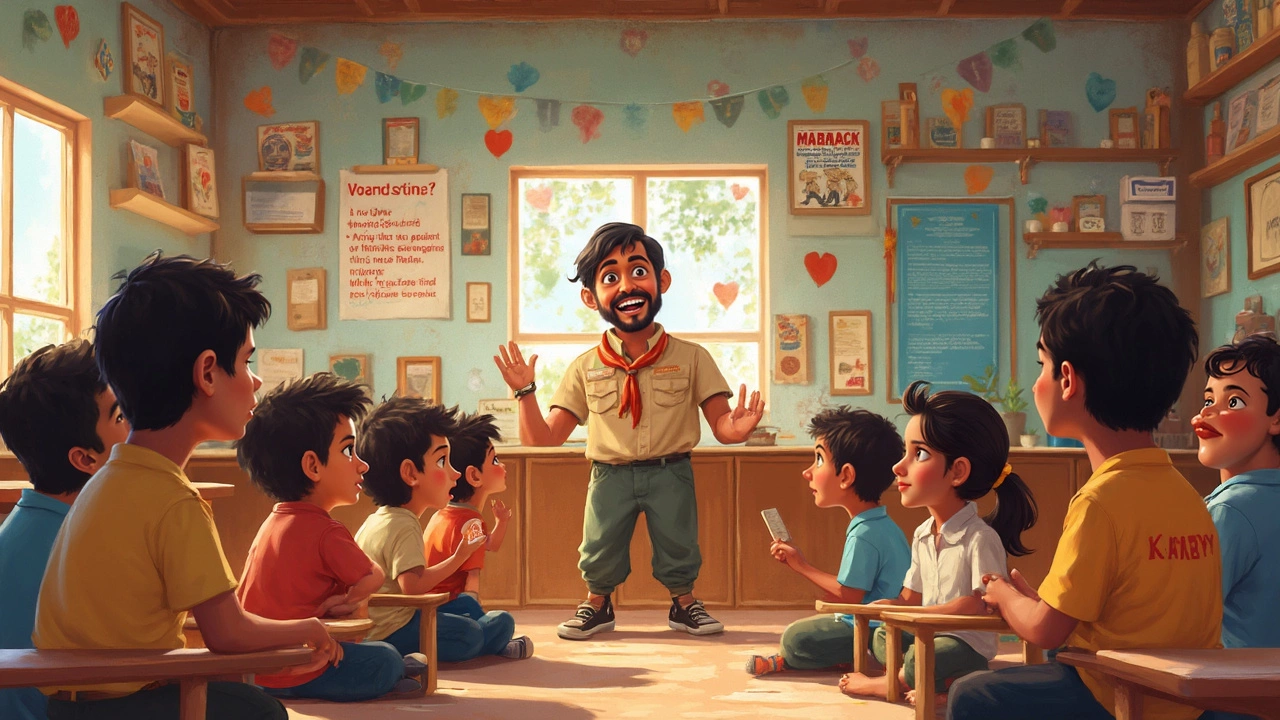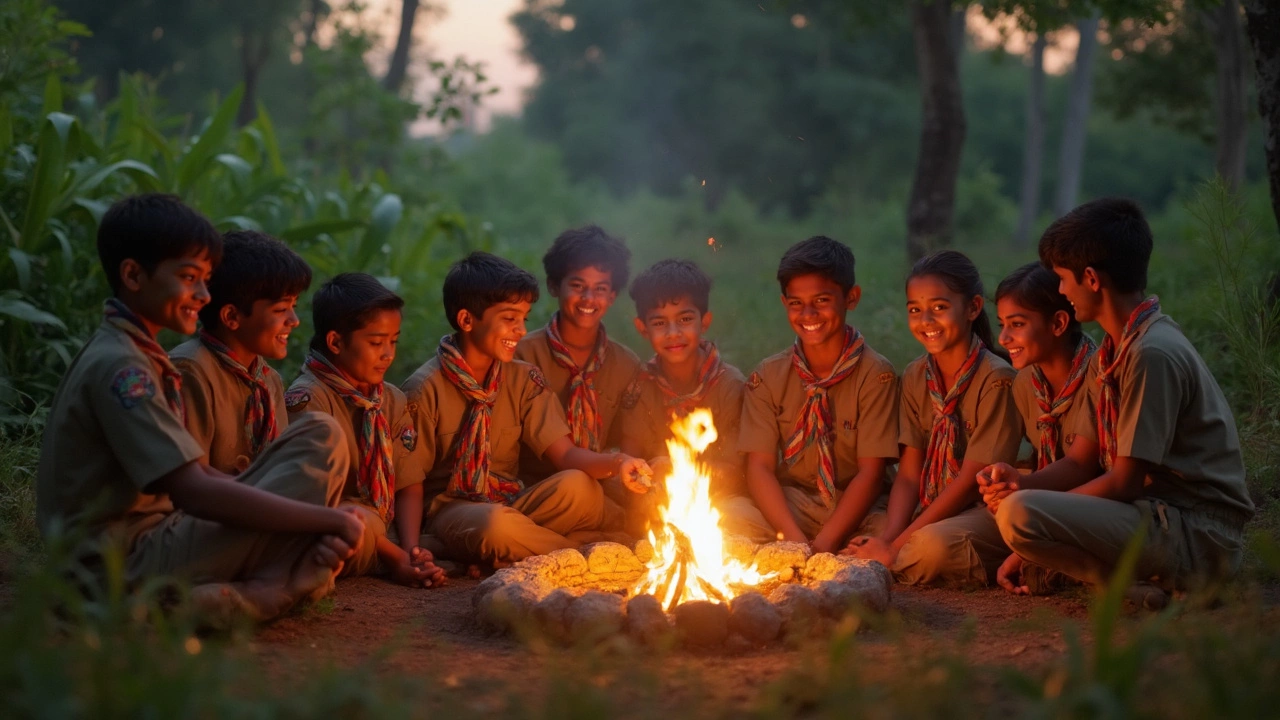Ask around for a classic youth group, and most folks say the Scouts. There’s something about the uniform, the badges, and those weekend hikes that stick in your mind. But what really sets the Scouts apart from newer clubs and activities?
It comes down to how they blend old-school values with hands-on learning. Kids aren’t just earning badges—they’re picking up teamwork, survival skills, and life confidence that sticks long after the tents are packed up.
If you’ve ever wondered how a group like the Scouts has kept going for over a century, it’s all about community and structure. While plenty of hobbies pop up and fade away, the Scouts have found a way to move with the times without losing that core spirit of adventure and friendship. Whether you’re a parent looking for a good fit for your kid or a teen looking for something real, understanding what a traditional group like this offers can make your choice way easier.
- What Makes a Youth Organization Traditional?
- The Scouts: Roots and Growth
- Everyday Life in the Scouts
- Real Benefits for Young Members
- Tips for Parents and Potential Scouts
What Makes a Youth Organization Traditional?
So, what sets a youth group apart as "traditional"? A lot of it comes down to how long it’s been around and the way it keeps certain routines, rules, or values going strong, year after year. It’s not just about being old, though—it’s about having an established structure that survives even as times and trends change. Think regular meetings, uniforms, badges, ceremonies, and a clear set of core values.
Groups like the Scouts stand out because they started over 100 years ago and barely skipped a beat since. The Scouts were founded by Robert Baden-Powell in 1907 in England, and the basic setup hasn’t really changed: there’s still an oath, a law, and an age-based structure. Traditional youth organizations also usually rely on adult volunteer leaders and proven ways to teach skills—think outdoor survival, first aid, and community service—rather than hopping on every new craze.
Here’s a quick look at some features you’ll usually find in a traditional youth organization:
- A storied history—usually dating back at least a few decades
- Uniforms or other symbols that make members easily recognizable
- Set routines for meetings and activities
- A focus on character building (not just fun)
- Lots of hands-on, real world skills
- Clear adult leadership and mentoring
Some of these groups span countries or even the whole world. The World Organization of the Scout Movement counts over 57 million participants in 172 countries. These aren’t small-time clubs—they have official events, camps, and systems for training volunteers and youth leaders.
| Organization | Founded | Countries | Members (worldwide) |
|---|---|---|---|
| Scouts | 1907 | 172 | 57 million+ |
| Girl Guides/Girl Scouts | 1910 | 150+ | 10 million+ |
| 4-H | 1902 | 80+ | 7 million+ |
Bottom line: if a group has stuck around for generations, still does what it did when your grandparents were kids, and works almost anywhere on the map, that’s the heart of a traditional youth organization.
The Scouts: Roots and Growth
The Scouts didn’t just show up out of nowhere. They got started back in 1907, thanks to Robert Baden-Powell, a British Army officer. He wanted a way for boys to learn practical skills and strong values, so he ran a camp on Brownsea Island in England. That first camp was tiny by today’s standards—just twenty boys—but it totally changed how people thought about youth organizations.
From there, the idea spread fast. By 1910, the movement popped up in the United States and soon all over the world. Today, Scouts aren’t just boys, either. Girls joined officially in the 1970s, and now just about every country has its own version.
Here’s a quick look at how the Scouts have grown through time:
| Year | Milestone |
|---|---|
| 1907 | First Scout camp on Brownsea Island |
| 1910 | Boy Scouts of America and Girl Guides formed |
| 1920 | First World Scout Jamboree |
| 1976 | Girls officially allowed in UK Scouts |
| 2023 | Scouting organizations in over 170 countries |
The program started off with classic activities like camping and knot-tying, but now it covers everything from STEM to community service. Scouts can even earn badges for coding, recycling, or emergency first aid. The group changes with the times, but the key ideas—leadership, friendship, self-reliance—haven’t budged an inch.
Fun fact: There are more than 57 million Scouts worldwide as of last year. That's a lot of tents and campfires!

Everyday Life in the Scouts
The daily reality of being in the Scouts looks a lot more hands-on than you might expect from a regular after-school club. Weekly troop meetings are the heart of the routine. Kids usually meet at a local community center or school gym, sometimes even at a park. Uniforms aren’t just a formality—they help everyone feel like they’re part of something bigger.
Meetings usually start with a flag ceremony and a quick check-in about upcoming events. From there, things get active. Scouts rotate through different activities that might cover camping skills, first aid, map reading, cooking over a fire, or working together on a problem-solving challenge. Earning badges is still a huge motivator, and you’ll spot the badges sewn onto shirts marking real-life skills—think fire-building, hiking, or even citizenship.
Special events pop up all year long. Overnight camps are an essential part of the Scout experience. Kids pitch their own tents, cook outside, and try stuff like canoeing or archery. You’ll also see community service weaved into the calendar—everything from cleaning up parks to helping collect food for local shelters.
- Weekly meetings with hands-on activities
- Team-building games and leadership skills
- Camping trips with survival tasks
- Community service projects
- Badge work session and ceremonies
The Scouts really keep things age-appropriate. For example, Cub Scouts (younger kids) might learn to tie knots or go on a short hike, while older Scouts move into leadership roles, planning trips or teaching skills to new members. There’s always an adult volunteer (usually a parent or teacher) around for safety and support, but the adults try to step back and give the kids space to figure things out themselves.
| Activity | How Often | Who Participates |
|---|---|---|
| Troop Meetings | Weekly | All members |
| Camping Trips | 2-4 times/year | Scouts ages 7+ |
| Badge Work | Ongoing | All members |
| Community Projects | Every few months | All ages |
One cool fact—according to the Boy Scouts of America, as of 2024 there were about 1 million active Scouts just in the U.S., and their most popular badge is First Aid. That says a lot about what kids and parents value—practical life skills mixed with adventure and teamwork. Real growth doesn’t just happen on epic weekend hikes; it’s baked into these simple weekly routines.
Real Benefits for Young Members
Joining the Scouts isn’t just about camping or making campfires—there are real-life perks that stick with you. For starters, the Scouts focus heavily on practical skills, teamwork, and personal growth. Think of it as a place where kids can learn stuff they won’t pick up in school, like how to read a map in the woods, tie everyday knots, or even lead a group through a tricky task.
The leadership skills are pretty well-known, too. Scouts have to organize activities, run meetings, and sometimes even mentor younger members. This hands-on experience turns into confidence when they need to speak up or step in during group work, college interviews, or first jobs.
What about social skills? Scouts mix with people from all sorts of backgrounds. They work as a team regardless of where everyone comes from or what anyone likes to do after school. That kind of variety helps kids become more accepting and better problem solvers.
Youth organizations like the Scouts are also linked to better mental health outcomes. According to a big survey published by the Scout Association in the UK, 83% of members said Scouting helped them build resilience, and 90% felt it boosted their self-esteem. That’s a solid sign the Scouts aren’t just for fun—they actually help kids deal with school stress and life curveballs.
| Benefit | Reported by Members |
|---|---|
| Improved confidence | 90% |
| Better teamwork skills | 89% |
| Learning practical skills | 87% |
| Higher resilience | 83% |
Don’t sleep on the awards and badges, either. Earning a badge isn’t just about having something shiny on your shirt—it represents real hours of effort and a skill that’s actually learned. That sense of progress is something a lot of young people say keeps them engaged, especially when school makes them feel like just another face in the crowd.
Parents notice the difference, too. It’s pretty common to hear about quieter kids coming out of their shell, or overwhelmed teens learning how to handle stress because they practiced it in their troop.

Tips for Parents and Potential Scouts
Thinking about signing up for the Scouts? Here’s what you and your family should know before jumping in. This handy guide covers what matters—how to pick the right group, costs, and how to make the most out of scouting, no matter your experience.
First off, not all Scout troops are the same. Some focus more on outdoor camping and survival, while others might mix in community service or creative projects. Ask about their regular activities, and see if your child’s interests line up with the group's vibe. Don’t be shy—visit a few meetings before deciding.
Money is always a practical point. Scouts try to keep things affordable, but there will be costs like uniforms, registration fees, badges, and some event expenses. Here’s what you might expect on average in the U.S.:
| Item | Typical Cost (USD) |
|---|---|
| Annual Registration | $60–$90 |
| Uniform Shirt | $30–$45 |
| Handbook/Guide | $10–$15 |
| Campouts (per trip) | $20–$50 |
Most troops fundraise throughout the year—think popcorn sales and car washes—to cover group trips and some gear. If money is tight, talk to leaders. There’s usually a way to get some help with costs.
Ready to join? Here’s how to make it smoother for both kids and parents:
- Let your child try a few meetings first—familiarity helps shy kids open up.
- Stay in the loop. Join group chats or parent nights so you know what’s planned.
- Label all gear with your child’s name—lost water bottles are a scouting classic.
- Encourage your kid to set a goal, like earning a certain badge or leading a small project.
- Volunteer if you can, even for one-off events. Scouts need extra hands, and it helps you connect.
One last thing: it’s totally okay if your child doesn’t click right away. Trust the process. Most young people who stick with Scouts report better self-confidence and stronger friendships—according to Boy Scouts of America surveys, more than 80% of members said they felt more prepared for life’s challenges after a year in the program.
